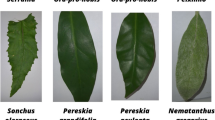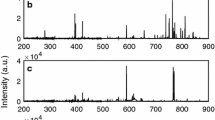Abstract
The mineral composition of three types of Hevea latex samples was determined by inductively coupled plasma atomic emission spectroscopy using a microwave-assisted wet digestion method. This method was compared in Round Robin tests to a dry reference method used to analyze leaf minerals. The results show on the one hand that for all elements, the methods studied are robust in terms of performance. Indeed, the low z scores obtained on the reference sample for both methods prove the accuracy of the methods studied. On the other hand, the results of the percentages of Mg, P and K obtained by the wet method are 5 to 10% higher than those obtained by the dry method. This significant difference shows that the wet method is more efficient than the dry method due to less loss of elements and can be used to quantify all elements of interest, especially sulphur, which to date had remained non-quantifiable by the dry method. The results confirmed the technique to be reliable, easy to use in the laboratory, and relatively mild in terms of chemicals However, certain limitations were found for calcium where, given the low contents and heterogeneity of the materials, inductively coupled plasma mass spectrometry, which is more suited to trace analyses, remains the preferred method.
Similar content being viewed by others
References
Compagnon P (1986) Le caoutchouc naturel. Maisonneuve et Larose:6–15
Clément-Demange A, Nicolas D, Legnaté H, Rivano F, Le Guen V, Gnagne M, Chapuset T (1995) Hévéa stratégies de sélection, Plantations, recherche, developpement. Mai-Juin 20
Jacob JL, Dauzac J, Prevot JC (1993) The composition of natural latex from Hevea brasiliensis. Clin Rev Allergy 11:13
Vaysse L, Bonfils F, Sainte-Beuve J, Cartault M (2012) Natural rubber, i: a comprehensive reference. Elsevier Polym Sci. https://doi.org/10.1016/B978-0-444-53349-4.00267-3
Liengprayoon S, Vaysse L, Jantarasunthorn S, Wadeesirisak K, Chaiyut J, Srisomboon S, Musigamart N, Roytrakul S, Bonfils F, Char C, Bottier C (2017) Fractionation of Hevea brasiliensis latex by centrifugation: (i) a comprehensive description of the biochemical composition of the 4 centrifugation fractions. Chemistry. https://doi.org/10.22302/PPK.PROCIRC2017.V1I1.480
Bittencourt AMB, Tabak D, Costa VG, Lachter ER (1998) Aggregation stability of natural rubber latex with low dry rubber content DRC in acidic medium. Polym Bull. https://doi.org/10.1007/s002890050231
Wititsuwannakul D, Rattanapittayaporn A, Wititsuwannakul R (2002) Rubber biosynthesis by a Hevea latex bottom-fraction membrane. J Appl Polym Sci. https://doi.org/10.1002/app.11674
Liengprayoon S, Vaysse L, Jantarasunthorn S, Wadeesirisak K, Chaiyut J, Srisomboon S, Musigamart N, Rattanaporn K, Char C, Bonfils F, Bottier C (2021) Distribution of the non-isoprene components in the four Hevea brasiliensis latex centrifugation fractions. J Nat Rubb Res. https://doi.org/10.1007/s42464-021-00133-4
Yip E (1990) Clonal characterisation of latex and rubber properties. J Nat Rubb Res 5:52–80
Liengprayoon S, Chaiyut J, Sriroth K, Bonfils F, Sainte-Beuve J, Dubreucq E, Vaysse L (2013) Lipid compositions of latex and sheet rubber from Hevea brasiliensis depend on clonal origin: lipid compositions of Hevea brasiliensis latex and rubber. Eur J Lipid Sci Technol 115:1021–1031. https://doi.org/10.1002/ejlt.201300023
Bellacicco S, Prades A, Char C, Vaysse L, Granet F, Lacote R, Gohet E, Flori A, Sainte Beuve J, Bonfils F (2018) The sugar and polyol composition of Hevea brasiliensis latex depends on the clonal origin of the tree. J Nat Rubb Res. https://doi.org/10.1007/bf03449172
Rolere S, Char C, Taulemesse JM, Bergeret A, Sainte-Beuve J, Bonfils F (2016) The majority of minerals present in natural rubber are associated with the macrogel: an ICP-MS and SEM/EDX investigation. J Appl Polym Sci. https://doi.org/10.1002/app.4306
Gopalakrishnan J, Thomas M, Philip A, Krishnakumar R, Jacob J (2010) Contribution of latex cations to the water relations and latex yield in Hevea brasiliensis. J Nat Rubb Res 23:93–97
Gan SN, Ting KF (1993) Effect of treating latex with some metal ions on storage hardening of natural rubber. Polymer. https://doi.org/10.1016/0032-3861(93)90742-S
Karunanayake L, Perera GMP (2006) Effect of magnesium and phosphate ions on the stability of concentrated natural rubber latex and the properties of natural rubber latex–dipped products. J Appl Polym Sci. https://doi.org/10.1002/app.22944
GanSN TKF (1993) Effect of treating latex with some metal ions on storage hardening of natural rubber. Polymer 34:2142–2147
Traoré MS, Diarrassouba M, Okoma KM, Dick KE, Soumahin EF, Coulibaly LF, Obouayeba S (2011) Long-term effect of different annual frequencies of ethylene stimulation on rubber productivity of clone GT 1 of Hevea brasiliensis in South East of Côte d’Ivoire. Agric Biol J North Am. https://doi.org/10.5251/abjna.2011.2.8.1251.1260
Silpi U, Chantuma P, Kasemsap P, Thaler P, Thanisawanyangkura S, Lacointe A, Ameglio T, Gohet E (2006) Spatial distribution of sucrose and metabolic activity in the Laticiferous tissue of three Hevea brasiliensis clones: effects of tapping and ethephon stimulation at trunk scale. J Rubb Res 9:115–131
Belmas R (1952) Contribution to the physical chemistry of hevea latex. I. Metal cations in latex. Rubb Chem Technol 25:124–132. https://doi.org/10.5254/1.3543359
Society of chemical industry (1935) Official notices. J Chem Ind 54:336–338
Rolere S, Char C, Taulemesse JM, Bergeret A, Sainte-Beuve J, Bonfils F (2016) The majority of minerals present in natural rubber are associated with the macrogel: an ICP-MS and SEM-EDX investigation. J Appl Polym Sci. https://doi.org/10.1002/app.43062
AFNOR (2018) NF T 90-210—water quality: protocol for the initial evaluation of the performance of a method in a laboratory
Feinberg M (2001) Validation interne des methodes d'analyse-Technique de l' ingénieur 224, pp 1–23
AFNOR (2017) ISO 1795: rubber, raw natural and raw synthetic, Sampling and further preparative procedures
AFNOR (2012) ISO 12914 Soil quality: microwave-assisted extraction of the aqua regia soluble fraction for the determination of elements
AFNOR (2000) ISO 6869:2000 Animal feeding stuffs: determination of the contents of calcium, copper, iron, magnesium, manganese, potassium, sodium and zinc, method using atomic absorption spectrometry
AFNOR (2011) EN 15410—solid recovered fuels—methods for the determination of the content of major elements Al, Ca, Fe, K, Mg, Na, P
Pinta M (1973) Méthodes de référence pour la détermination des éléments minéraux dans les végétaux : determination des éléments : calcium, magnésium, fer, manganèse, zinc et cuivre par absorption atomique. Chemistry 10275017:143–158
AFNOR (2000) ISO 15671-rubber and rubber additives—determination of total sulfur content using an automatic analyser
AFNOR (2018) ISO 6101-rubber determination of metal content by atomic absorption spectrometry
AFNOR (2021) ISO 19050-Rubber, raw, vulcanized—determination of metal content by ICP-OES
Acknowledgements
Analyses were carried out at CIRAD Laboratory of Water, Soil and Plant Analysis (US Analyses, CIRAD, Montpellier, France). The authors would like to thank the ANAE Unit—Methods and developments in environmental analysis as well as SADEX and USRAVE laboratories for their participation in the inter-laboratory tests.
Author information
Authors and Affiliations
Corresponding author
Ethics declarations
Conflict of interest
On behalf of all authors, the corresponding authors state that there is no conflict of interest.
Additional information
Publisher's Note
Springer Nature remains neutral with regard to jurisdictional claims in published maps and institutional affiliations.
Rights and permissions
About this article
Cite this article
Char, C., Tella, M., Bonfils, F. et al. Validation of microwave-assisted wet digestion of natural rubber for ICP-AES mineral analysis. J Rubber Res 25, 79–88 (2022). https://doi.org/10.1007/s42464-022-00159-2
Received:
Accepted:
Published:
Issue Date:
DOI: https://doi.org/10.1007/s42464-022-00159-2




